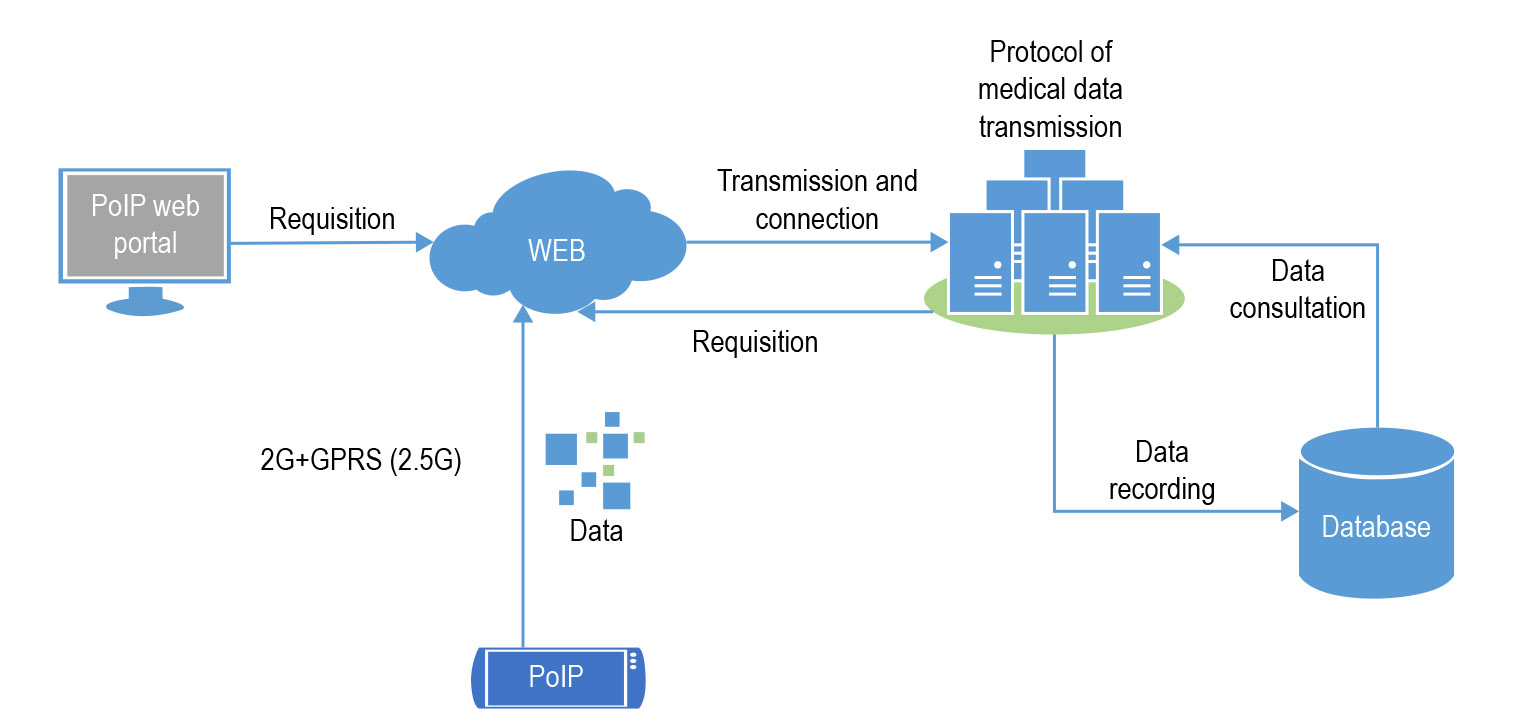Volume 111, Nº 2, August 2018
DOI: http://www.dx.doi.org/10.5935/abc.20180112
ORIGINAL ARTICLE
Cryptogenic Acute Ischemic Stroke: Assessment of the Performance of a New Continuous Long-Term Monitoring System in the Detection of Atrial Fibrillation
Rogerio Ferreira Sampaio
Isabel Cristina Gomes
Eduardo Back Sternick

Figure 1 – Conceptual diagram of PoIP – as can be seen in the diagram, PoIP uses the concept of real-time transmission of the data by the EDGE technology. Wireless data transmission is performed by standard protocol to internet access in mobile devices by GPRS-EDGE – Generic Packet Radio Service, commonly known as 2.5G.
Abstract
Background: Long-term monitoring has been advocated to enhance the detection of atrial fibrillation (AF) in patients with stroke.
Objective: To evaluate the performance of a new ambulatory monitoring system with mobile data transmission (PoIP) compared with 24-hour Holter. We also aimed to evaluate the incidence of arrhythmias in patients with and without stroke or transient ischemic attack.
Methods: Consecutive patients with and without stroke or TIA, without AF, were matched by propensity score. Participants underwent 24-hour Holter and 7-day PoIP monitoring.
Results: We selected 52 of 84 patients (26 with stroke or TIA and 26 controls). Connection and recording times were 156.5 ± 22.5 and 148.8 ± 20.8 hours, with a signal loss of 6,8% and 11,4%, respectively. Connection time was longer in ambulatory (164.3 ± 15.8 h) than in hospitalized patients (148.8 ± 25.6 h) (p = 0.02), while recording time did not differ between them (153.7 ± 16.9 and 143.0 ± 23.3 h). AF episodes were detected in 1 patient with stroke by Holter, and in 7 individuals (1 control and 6 strokes) by PoIP. There was no difference in the incidence of arrhythmias between the groups.
Conclusions: Holter and PoIP performed equally well in the first 24 hours. Data transmission loss (4.5%) occurred by a mismatch between signal transmission (2.5G) and signal reception (3G) protocols in cell phone towers (3G). The incidence of arrhythmias was not different between stroke/TIA and control groups. (Arq Bras Cardiol. 2018; 111(2):122-131)
Keywords: Atrial Fibrillation; Stroke; Electrocardiography, Ambulatory; Cell Phone; Ischemic Attack, Transient.















